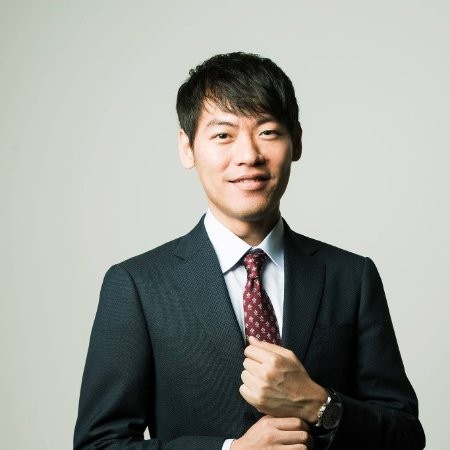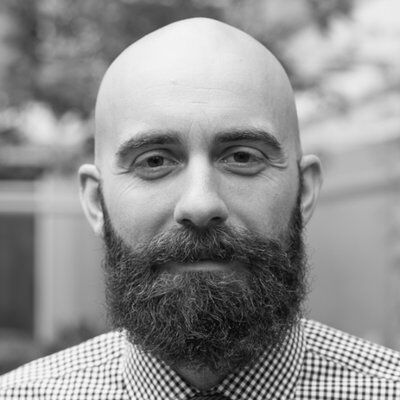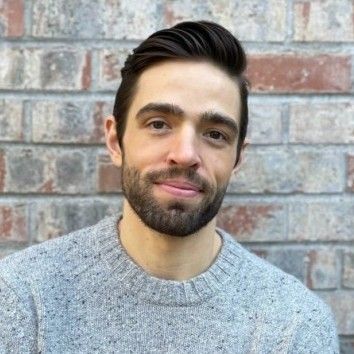A strong brand starts with a clear strategy and well-defined positioning. This service focuses on understanding your market, competition, and audience to create actionable strategies that differentiate your brand. By aligning messaging with your business objectives, values, and mission, we as branding agency establish a framework that supports sustainable growth and builds long-term relevance. Whether for established corporations or small businesses, this service lays the groundwork for effective branding initiatives.

Branding
Ramotion is a global branding agency that creates impactful branding strategies, supports rebranding, and guides client growth through strategic advertising support.
Featured clients
Our branding agency specialize in working with brands, regardless of the size and lifecycle stage, delivering strategic branding solutions to achieve differentiation and build recognition and trust.
Series of visual concepts for improving the user experience
Marketing website for a subsidiary of the CBRE Group's co-working space company
Iconography design for a payments infrastructure company with 250M+ API request per day
Official Apple tvOS app user interface development
Official Firefox rebrand and ongoing support for design projects at Mozilla
Brand identity design for an internal App Store by Universal Music
Visual identity for Adobe-owned company products
Ongoing design support for the leading destination for company insights
Designing a motion identity for Opera
Brand and marketing design support for an open source data structure server company
Ongoing design and development collaboration with an enterprise identity provider
Iconography guidelines, assets and web design for a digital forensics solution company
Redesign of the support portal and 30% improvement in users’ ability to get the answers they want
Design for a membership-based healthcare system
Iconography for a secure workspace software company with over 16 million cloud users
Rebranding for an open-source web testing platform with 5 million weekly downloads
Design for the world's first audio word processor
Brand identity for a secure data onboarding solution that processed more than 25 billion records
Website design for a B2B data provider platform with over 50 million company records
Brand identity and website for a tool used by over 80% of Fortune 50 companies' machine learning teams
Rebranding an e-commerce solution used by 180,000 entrepreneurs
Website for a blockchain data storage network that raised more than $250M+ at ICO
Rapid prototyping for an accounting software company with over 3.7 million subscribers
UX design for a medical group and technology company with a network of nearly 140,000 licensed doctors
Iconography design system for 500 million users around the world
Ongoing UX design and CRO for child care and education company with more than 200,000 children enrolled
Developing micro-interactions for the Lightning Design System
Marketing website for the cross channel marketing platform
Brand identity for a multi-chain crypto trading and liquidity hub with $10B+ in trading volume
Design for a global video game commerce company
Capabilities
Process
Industries
Brand strategy & positioning
Naming & verbal identity
Your brand’s name and verbal identity shape how it communicates. This service includes developing memorable names, defining tone of voice, and crafting messaging frameworks that resonate with your audience. We provide practical tools, such as detailed guidelines, band vocabulary, and examples, to help your team maintain consistency across different touchpoints. While trademark registration is outside the scope of this service, we check name uniqueness with available online services. The names we create are designed to align with broader brand strategies and ensure clarity and impact.
Design strategy
Design strategy bridges the gap between strategic insights and execution, creating scalable systems that ensure consistency across all touchpoints. This service includes developing strategic frameworks for visual identity and brand identity design to align with brand strategy and help in the decision-making process. By focusing on long-term scalability, we ensure your design systems remain adaptable to evolving business needs while supporting seamless integration across digital and physical applications.
Brand idea & conceptual metaphor
A compelling brand idea and conceptual metaphor are the foundations for all creative decisions. This service explores the essence of your brand, translating its core values and mission into a unifying idea. Conceptual metaphors inspire design, storytelling, and communication, ensuring a cohesive narrative that resonates with your audience. These elements serve as a guiding light for all branding initiatives, fostering consistency and clarity.
Creative platform development
Over time, brands need to become more varied in their communication. This service addresses that challenge by creating a flexible, creative platform that refreshes storytelling and visuals without needing constant redesigns. Typically updated annually, this platform ensures your brand remains relevant, engaging, and aligned with current trends. It benefits brands looking to maintain audience interest and optimize resource allocation.
Visual language identity
A cohesive visual language reinforces brand recognition and ensures consistency across all touchpoints. This service involves designing typography, color palettes, patterns, and layout frameworks, creating a distinctive and adaptable system. Comprehensive guidelines support implementation, ensuring that internal teams and external partners can apply the visual language effectively. This service enhances clarity and engagement by unifying your brand’s visual presence.
Logo design
Your logo is the centerpiece of your visual identity, embodying your brand’s values in a single mark. This service includes designing or refining logos adaptable across digital and physical platforms. We provide detailed usage guidelines, ensuring consistency in all applications. Whether creating a new logo or evolving an existing one, we guarantee it integrates seamlessly into your broader visual identity system.
Brand family & architecture
Creating a unified architecture is essential for organizations managing multiple brands or sub-brands. This service involves designing scalable systems that maintain the individuality of each sub-brand while ensuring cohesion under the parent brand. By simplifying decision-making and improving messaging coherence, we help businesses prepare for growth, acquisitions, or organizational restructuring while ensuring long-term consistency.
Brand illustrations & iconography system
Custom illustrations and iconography bring depth and character to your brand. This service includes designing visual assets that align with your brand identity and are optimized for use across various platforms. By reducing dependency on stock visuals, we create assets that are unique, authentic, and aligned with your brand’s voice. These elements enhance storytelling and strengthen brand recognition.
Motion design & animation
Motion design adds a dynamic layer to your branding, making communication more engaging and interactive. This service includes creating animations for logo, product walkthroughs, marketing campaigns, and other touchpoints. By focusing on both functionality and creativity, we ensure motion assets align with your overall brand strategy while enhancing audience engagement.
Guidelines & brand portal
We develop detailed guidelines and centralized brand portals to maintain consistency across all branding efforts. These resources include downloadable templates, approved visual standards, and best practices for implementation. This service simplifies brand management, ensuring that internal teams and external collaborators can uphold the brand’s identity and standards effectively.
Ongoing design support
Branding is an ongoing process, and maintaining consistency requires continuous effort. This service provides expert support for daily design needs, strategic updates, and campaign adaptations. Acting as an extension of your internal team, we ensure that your branding aligns with your objectives, supporting both day-to-day operations and long-term goals.
More about services
Immersion & discovery
We begin every project with an in-depth discovery phase, diving deep into understanding your business, goals, and challenges. We align on the project's objectives through workshops, stakeholder interviews, and analyzing existing materials. This phase ensures clarity and sets a solid foundation for the brand strategy and all subsequent work.
Brand strategy & verbal identity
This phase focuses on refining your brand’s strategic direction and verbal identity. We create messaging frameworks, tone of voice guidelines, and, if necessary, naming strategies that align with your brand’s objectives. By developing precise communication tools, our branding agency experts ensure your messaging resonates with your audience and remains consistent across all touchpoints.
Design strategy & brand concept
We translate strategic insights into practical design systems and brand concepts. This phase involves creating frameworks for visual identity, design implementation, and scalability. The brand concept aligns with your business goals, ensuring that all visual elements support immediate and long-term objectives.
Execution & refinement
This phase involves implementing your brand's visual components, including logos, illustrations, motion graphics, and layouts. Using an iterative approach, we refine each element to ensure alignment with the overarching strategy. Testing and validation ensure that designs function effectively across all touchpoints.
Implementation & onboarding
We provide detailed guidelines and training resources to facilitate the seamless adoption of your brand. These tools ensure consistent application of your brand identity across teams and partners, reducing onboarding time and improving operational efficiency. We also integrate feedback loops to address any adjustments needed during implementation.
Ongoing support
Brands evolve, and our support helps you adapt to changing needs. This phase includes updating visual identity systems, refining messaging, and supporting new campaigns. By maintaining alignment with your strategic goals, we ensure that your branding remains relevant, consistent, and effective over time.
More about process
B2B
Build market positioning, corporate identity, and engage decision-making customer personas.
SaaS
Highlight value propositions, seamless design, and boost subscription engagement.
Fintech
Establish trust, craft a digital-first identity, and promote inclusive financial empowerment narratives.
Cybersecurity
Ensure trust, showcase expertise, and emphasize proactive risk mitigation against threats.
Healthcare
Focus on patient-centric messaging, compliance, and innovative healthcare advancements.
Startups
Create a strong foundational identity, differentiate in the market, and support agile growth.
Case studies
Firefox’s identity system enhanced brand recognition, improved user engagement, and reinforced its fast, private, user-centric identity.
Branding elevated Volusion’s identity, boosting recognition, engagement, and driving $29B+ in global merchant sales.
Our team collaborated with Descript to develop their brand identity and website, driving brand recognition, user engagement and reach.
Iconography design for ColorOS contributed to OPPO’s growth, now reaching over 500 million users.
Brand identity for Bitmoji, fueling its success and leading to Snap’s $64.2M acquisition
We redesigned Flatfile’s branding and website, driving $50M funding, 1.75M onboarded customers, and 25B records processed.
What our
partners say
ReviewsBranding benefits
Customer loyalty
Builds lasting emotional connections, ensuring customers stay loyal to your brand.
Brand recognition
Enhances visibility and makes your business memorable across all platforms.
Credibility and trust
Establishes authority and reliability, boosting customer confidence in your offerings.
Competitive advantage
Differentiates your business in a crowded market, positioning you ahead of competitors.
Advertising impact
Maximizes the effectiveness of campaigns by aligning messaging with a powerful brand identity.
Increased revenue
Strengthens brand equity, allowing you to charge a premium and drive profitability.
Why Ramotion?
Ramotion branding agency drives brand differentiation and growth by aligning vision, culture, and design, simplifying complexity, and delivering impactful, strategic branding solutions that amplify reach, build loyalty, and achieve lasting business value.
Years in business
15+Distributed team members
70+Brands transformed
120+Avg. rating on DesignRush & Clutch
4.9Awards & recognition
More awards- Best App of the Year
- App of The Week
- App Store Editors' Choice
Verified Branding Agency
- Best Branding Company
- Top 3 Corporate Branding Agency
Top Branding Agency
One of the Top Branding Agencies In The World
Services
Insights
FAQ
Brand identity
Unify your brand’s visuals, voice, and guidelines for a cohesive, trust-building presence.
Brand strategy
Develop a targeted, value-driven approach to attract audiences and outpace your competitors.
Rebranding
Transform outdated branding with strategic updates to better align with evolving goals and audiences.
What is Branding?
Discover the power of branding and understand the fundamentals and leverage effective brand strategy!
Jun 6, 2024Read moreBrand vs Branding vs Brand Identity
Understand the differences & significance. Discover the distinctions in this informative article!
Aug 29, 2024Read moreBrand narrative
If you struggle to connect with your audience, consider your brand narrative. Learn how to craft a brand narrative that forges trust.
Jan 27, 2025Read moreHow do I choose the best branding agency?
Look for an branding agency with a strong portfolio, positive client testimonials, and industry experience. Ensure they align with your goals, budget, and offer transparent communication and collaboration.
What is the branding process like?
The process includes understanding your goals, research, strategy, design, and implementation. Branding agencies use structured workflows to ensure your brand’s identity and vision are effectively captured.
How much does branding cost?
Costs vary based on project scope, the agency’s expertise, and required deliverables. Ensure pricing transparency and evaluate the potential ROI to justify the investment.
Do you offer branding services in specific locations?
In addition to serving clients worldwide—including businesses in the US, UK, Germany, Canada, and Australia—we operate as a branding agency in San Francisco, Los Angeles, and New York.
How long does branding take?
At our branding agency, branding projects typically take 4–12 weeks, depending on complexity and scope. Discuss timelines early to align expectations and allow time for revisions.











